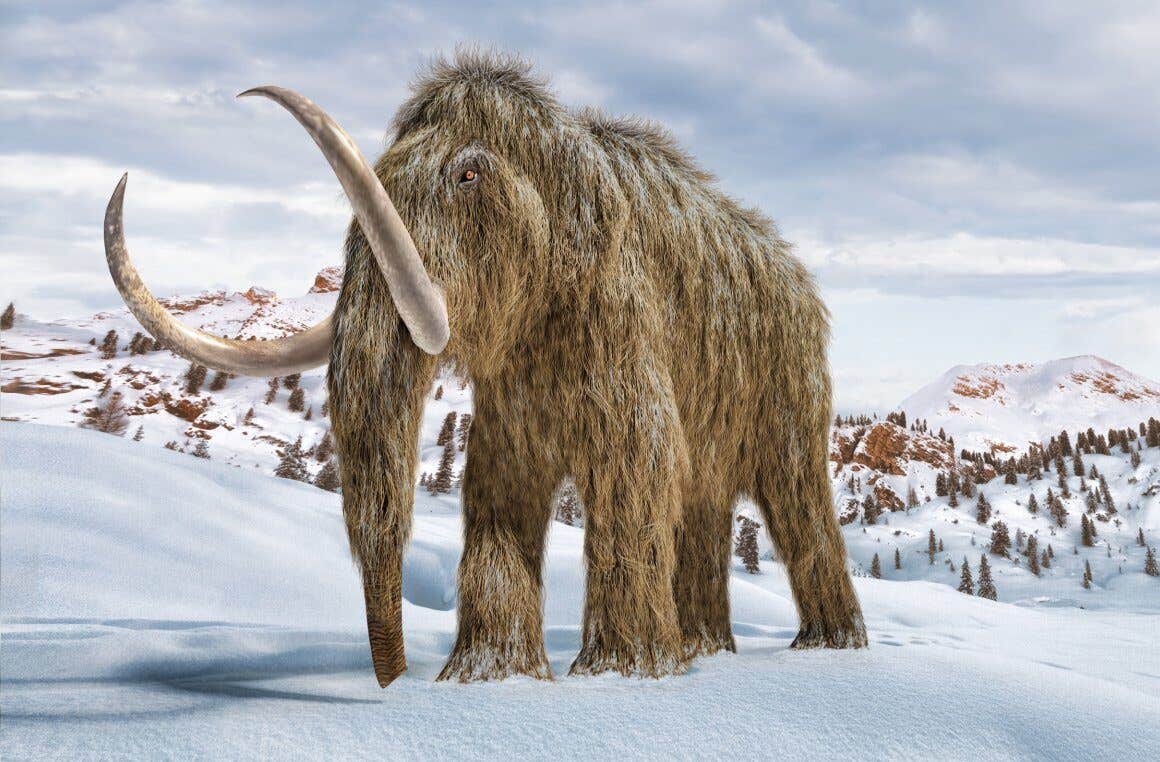Scientists solve the mystery of what actually killed off the wooly mammoth
About 4,000 years ago, the last wooly mammoths disappeared on a remote Arctic island off the coast of Siberia.

About 4,000 years ago, the last known wooly mammoths disappeared on a remote Arctic island off the coast of Siberia. (CREDIT: CC BY-SA 4.0)
About 4,000 years ago, the last wooly mammoths disappeared on a remote Arctic island off the coast of Siberia, marking a sad end to these iconic Ice Age creatures. A new genomic study, however, deepens the mystery of their extinction.
This study provides the most comprehensive look yet at the inbreeding, harmful mutations, and low genetic diversity of the Wrangel Island mammoths during their 6,000 years of isolation. Surprisingly, it concludes that these genetic issues likely did not lead to their demise.
"This suggests that something else, and very sudden, caused the population to collapse," said Marianne Dehasque, an evolutionary geneticist from Uppsala University in Sweden, and the lead author of the study published in Cell.
The researchers analyzed genome data from 14 Wrangel mammoths and seven mammoths from a Siberian mainland population that was ancestral to the island dwellers, dating back to 50,000 years ago.
As the Ice Age waned, the mammoths' dry steppe tundra habitat transformed into wetter temperate forests due to rising global temperatures, confining these animals to northern Eurasia.
"This is probably also how mammoths eventually ended up and became isolated on Wrangel Island, which lost its connection to the mainland around 10,000 years ago due to rising sea levels. It may have even been a single herd that populated the island," Dehasque explained.
Related Stories
The genome data indicated that the Wrangel Island population began with no more than eight individuals, growing to 200-300 mammoths within about 600 years and remained stable.
The study found reduced diversity in genes crucial to the immune system. While the mammoths accumulated moderately harmful mutations, the most detrimental defects disappeared from the population as individuals carrying them were less likely to survive and reproduce.
Though the study didn't include genomes from the last 300 years of the population, new remains have been discovered, and genomic analysis is planned.
Previous studies suggested the extinction was due to accumulated genetic defects.
"The reason we don't think inbreeding, low genetic diversity or harmful mutations caused the population to be doomed is that if that had been the case, the population should have gone through a gradual decline in size, where it dwindled toward extinction with an accompanying increase in inbreeding and loss in diversity," said Love Dalén, an evolutionary geneticist at the Centre for Palaeogenetics, a collaboration between Stockholm University and the Swedish Museum of Natural History.
"But this is not what we see. There is virtually no change in inbreeding levels or genetic diversity throughout the 6,000 years the mammoths were isolated on the island. This means that the population size was stable through time," Dalén added.
Human hunting also seems an unlikely cause.
"I agree that the mystery of the mammoth's demise continues. From archaeological evidence, we know that humans only arrived 400 years after mammoths went extinct," Dehasque said.
"Fire hearths and habitation structures would be easy to find, as well as flint shards, reworked bones and tusks, et cetera. But there is simply no trace of humans having interacted with the mammoths on Wrangel," Dalén added.
An infectious disease, possibly introduced by birds, is one possible explanation.
"Perhaps the mammoths would have been vulnerable to that given the reduced diversity we identified in the immune system genes. Alternatively, something like a tundra fire, a volcanic ash layer or a really bad weather season could have caused a really bad growth year for the plants on Wrangel. Given how small the population was, it would have been vulnerable to such random events," Dalén said.
"In other words, it seems to me that maybe the mammoths just got unlucky. Had it not been for such bad luck, we would perhaps still have had mammoths around today," Dalén added.
Note: Materials provided above by the The Brighter Side of News. Content may be edited for style and length.
Like these kind of feel good stories? Get the Brighter Side of News' newsletter.
Rebecca Shavit
Science & Technology Journalist | Innovation Storyteller
Based in Los Angeles, Rebecca Shavit is a dedicated science and technology journalist who writes for The Brighter Side of News, an online publication committed to highlighting positive and transformative stories from around the world. With a passion for uncovering groundbreaking discoveries and innovations, she brings to light the scientific advancements shaping a better future. Her reporting spans a wide range of topics, from cutting-edge medical breakthroughs and artificial intelligence to green technology and space exploration. With a keen ability to translate complex concepts into engaging and accessible stories, she makes science and innovation relatable to a broad audience.



